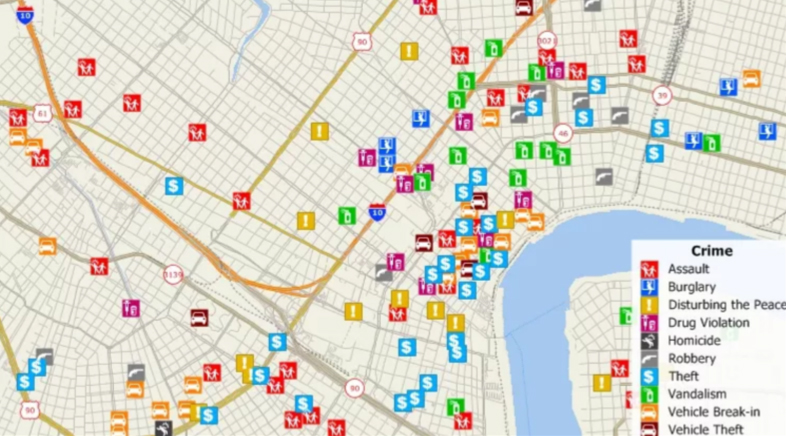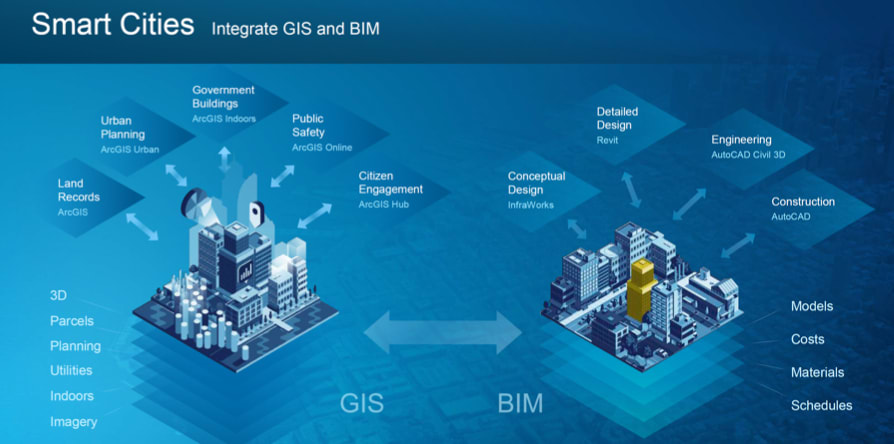Nahim Iqbal, director of BIM Academy, outlines how geographical information systems can be harnessed and used alongside BIM to help the construction industry manage projects more effectively.
Our world as we see it now certainly comes with abundant resources (or at least it did at some point) and as mankind we continue to consume these resources, whether fresh water, fossil fuels and heavy metals at phenomenal rates.
Eventually this raises questions, for example: Where’s the next best location of fresh water? Is it easily accessible? Where do we need to transport it to and what is the most efficient route?
Imagine this scenario for all the vast amounts and types of resources around the globe. How do we plan, manage and coordinate our efforts efficiently? One possible solution is by using geographical information systems (GIS).
Definition
GIS is “digital geography” that enhances basic data by linking it to location intelligence. This can be used to inform various types of analysis and helps people make informed decisions. As my former colleague Maya Cheikh from Mace puts it: “GIS in its simplest form is like Google Maps, which displays spatial data and answers simple queries eg finding places and calculating routes.”
Imagine this type of technology developed on a more advanced level with other technologies and processes, which ultimately leads to a fully functional GIS.
The application and uses of GIS can apply to various sectors including banking, built environment, logistics, healthcare and aviation. It could include activities such as analysing customer demographics, optimal delivery routes, land usage, area calculations and design/construction interfacing and coordination. GIS provides the functionality to combine data, maps and location intelligence with powerful analysis capabilities.
Value of GIS in the built environment
The application of GIS in the built environment is relevant to various disciplines (see figure 1).

Figure 1: Examples of applying GIS to different disciplines
Initially not all stakeholders understand the concept of GIS and come forward with a scenario where they ultimately need help through visualisation and analysis of data geographically to help them to make an informed decision. Figure 2 illustrates how GIS can be used for crime mapping.

Figure 2: GIS Use for Crime Mapping (Source Maptitude)
The know-how and process in achieving the desired outcomes is based on effectively engaging with stakeholders to understand underlying needs. For example, users may have thousands of data entries managed in a spreadsheet, but these may be very time-consuming and tedious to interpret.
This spreadsheet could be potentially integrated and developed into a viable concept through coordination with the technical wizards of the GIS world to deliver a simple and effective visual representation in GIS, similar to figure 2.
This process is not by a simple switch of a button, as the element of trial, testing and validation will be fundamental in achieving the final solution. Nonetheless, users can see the benefits of these efforts downstream and possibly much more if varying degrees of automation are explored and implemented in workflows.
BIM, GIS integration and beyond
The advent and use of GIS have always been an ambiguous area for some, especially when it comes to understanding the relationship with BIM. I have always viewed BIM and GIS as being complementary, where in some instances one is better suited for a certain use eg BIM for detailed 3D design coordination and GIS for checking attribute data and performing analysis across large geographical areas.
In other cases, data/geometry exported between the two can support specific activities and informed decision-making dependent on project needs.
The recent formation of strategic alliances is also very positive, particularly in the case of Autodesk and ESRI joining forces to integrate GIS and BIM more seamlessly. This is likely to be a huge benefit for teams managing live projects where previously lack of integration has limited possibilities to manage design and construction projects more effectively.
The opportunities of integration into other areas such as smart cities was highlighted by ESRI president and founder Jack Dangermond during the ESRI 2018 Singapore conference (see figure 3). The creation of data in both GIS and BIM through the lifecycle, eventually supplements the base information for integration with Smart City processes and applications.

Figure 3: Integrating GIS and BIM for Smart Cities (Source ESRI)
Summary
Based on the capabilities and experiences of the BIM Academy team, specifically for the built environment sector, we recognise that GIS is a tool that provides the means and methods to optimise project delivery through design, construction and operations.
Though widely used in specific domains it is not commonly understood and acknowledged by many, therefore perhaps resulting in missed opportunities and inefficiencies. Overall as our industry continues to explore and test new technologies, concurrently this will help us in continuing to champion the use of GIS and optimising ways of working.
Top image: Daniil Peshkov/Dreamstime.com











